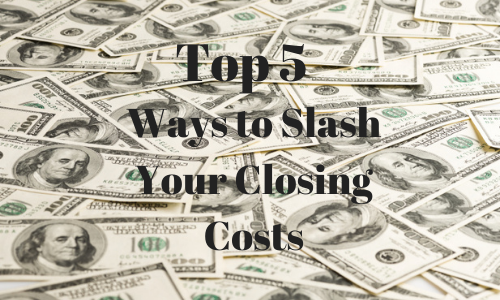5 Ways to Save on Closing Costs
Most home buyers want as low of closing costs as possible when they purchase a home. A number of these closing costs are required, but some are negotiable. If you take the time to investigate, you might be able to save several thousand dollars.
Here are four ways to possibly reduce closing costs and ensure you have more money when moving into your new home.
1. Shop Around for a Loan
You may think of shopping around for a mortgage loan as being more important for getting a better rate. However, lenders also formulate closing costs differently, and this could be an additional way to save.
About one in two home buyers stop researching after finding a lender they think will work, but shopping around is to your advantage. With more than one offer in your hands, you can compare all the details for the loan and the closing costs, and get a better sense of which will give you the best deal.
2. Negotiate With the Seller
Some loans, such as loans guaranteed by the Federal Housing Administration (FHA), require that the seller shoulder some of the closing costs for the buyer. Even if you do not have an FHA loan, you can still come to the table with the seller and ask about meeting halfway on the closing costs.
For example, if the seller is looking to sell the home quickly and you are still negotiating on the sales price, you might suggest that they cover some of the closing costs while keeping the home sales price the same. In that case, the seller pays a little extra to close the sale sooner, and you pay less overall.
3. Double-Check Your Paperwork
Three days before you close on the loan, you will typically be sent a Closing Disclosure to show you all the details of your loan. In this disclosure will be an itemized description of all closing costs.
This is the time to get out the Loan Estimate you were given when your lender first gave you an offer, and make sure that every number lines up. If there is any charge listed under closing costs that does not make sense to you, you should ask for more information. Confirm that all the charges on the closing statement were actually performed, so that you are not paying for a task that was not completed for some reason.
4. Check to See if You Qualify for Down Payment Assistance Programs
As of this writing in January of 2017, there is still money available in the Pathway to Purchase Program in Tucson (and also many other AZ cities). Up to $20,000 towards down payment, lower average credit score requirements, low or no money needed at closing (wow!!) with a purchase price to $356,35. “Sounds amazing,” you say, “when does that end? I am not sure if I want to buy right now.” The answer is- we don’t know. There is a finite amount of money for this program, and when it is gone, they are saying it’s gone. Of course, a new program may come along or pathway to purchase may receive some new funding that no one is yet aware of, but they key to success in utilizing programs like this is to not to delay.
5. Avoid Paying Discount Points
Your lender may recommend or require you to pay discount points on your loan, depending on the type of loan you have chosen in some cases. A discount point is a charge that consists of one percent of the mortgage. In exchange, the interest rate on your mortgage is lowered by a quarter of a percentage point. Discount points are useful for lenders and home buyers when mortgage interest rates are generally higher.
If interest rates are low, consider skipping the discount point to save the additional up-front expense. If your lender makes it a requirement, note that in most cases paying discount points is tax-deductible for the year paid.
Saving up for a down payment and then having to pay a great deal of closing costs may not be something you may want to do before moving into your new home. With a bit of additional research and some investment of your time, you might be able to trim your closing costs by a significant amount, meaning you’ll be free to use that money as you see fit.



Leave a Reply